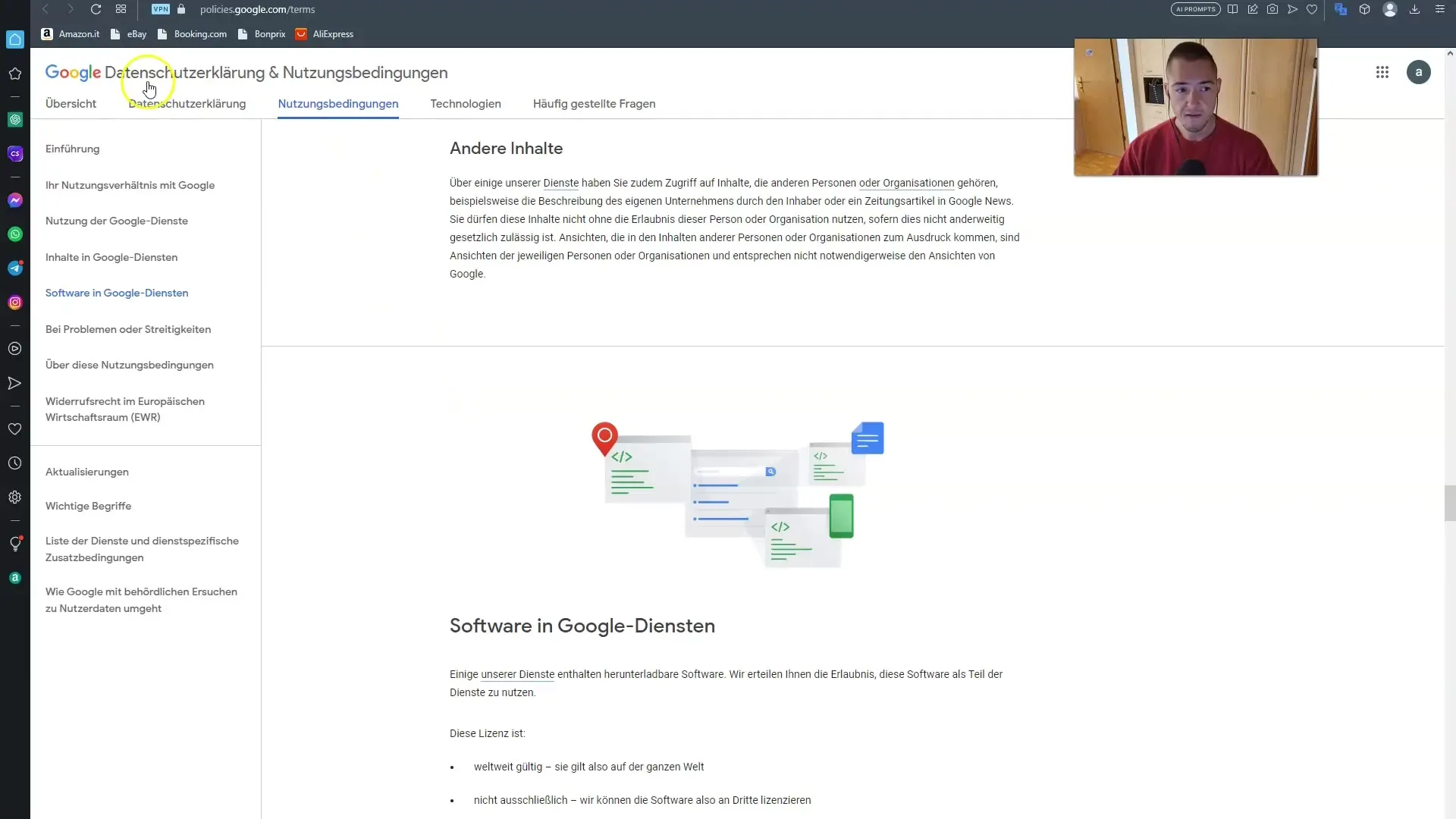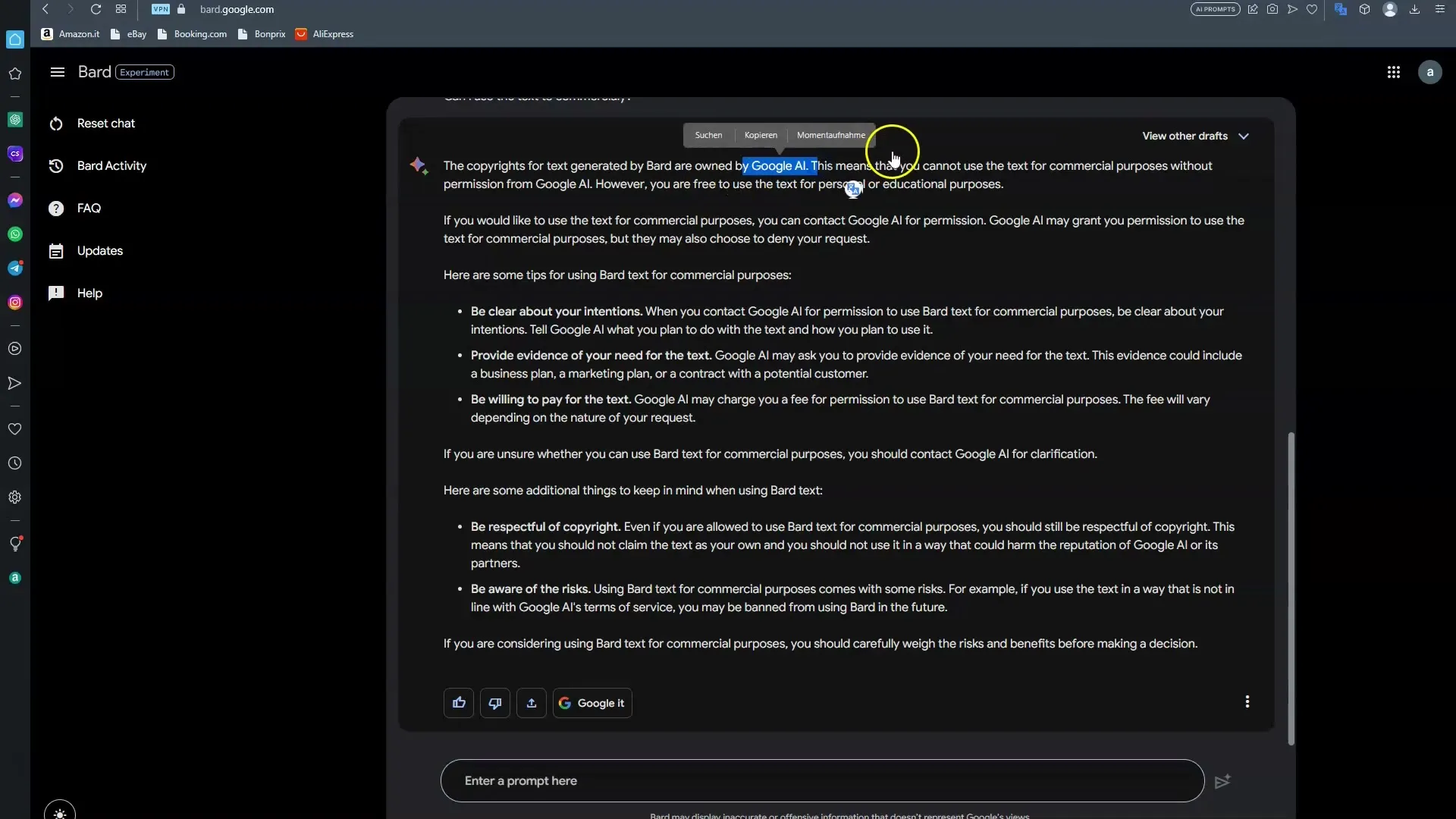It is essential to deal with the topics copyright and copyright, especially when using AI-generated texts. Google Bard is a powerful tool that can help you create content, but using such technologies also raises legal questions. In this guide, you will learn how to safely handle Google Bard content without violating legal regulations.
Main insights:
- It is important to carefully read Google's terms of use and privacy policies.
- You should rephrase the content generated by Google Bard to avoid potential copyright infringements.
- When publishing content, transparency about the use of AI tools is crucial.
Step-by-step guide
First, you should read through Google's relevant privacy policies and terms of use. It is crucial to understand what Google allows and disallows regarding the use of its content. To understand the details, visit the corresponding Google website.

When creating or publishing content generated by Google Bard, make sure to always verify the information provided by Bard. False information can lead to legal issues. Thorough verification is therefore essential.
An important point is that you should never lie when asked how you created your texts. By publicly stating that Google Bard assisted you in creating the texts, you remain on the safe side. This transparency can help avoid legal conflicts.
In general, it is possible to use the content created with Google Bard. However, you should also ensure to rephrase the content. This avoids the risk of infringing on third-party intellectual property.
If you are unsure whether you are allowed to use certain texts generated by Google Bard for commercial purposes, I recommend you inquire directly with Google. There you will find some general guidelines that should help you.

A good practice is to clarify what you intend to do with the content. You might consider even paying a small fee to Google to be on the safe side. Respecting the content is essential.
A significant risk is that Google Bard is based on articles written by other individuals. This results in the possibility of inadvertently generating content that violates copyright.
A potential issue may arise when Bard delivers a text that closely resembles the original work of another author. If you then get involved in a legal dispute, this could have unpleasant consequences for you.
Be aware that there can be legal consequences even if you do not intentionally violate copyrights. Therefore, a process of rephrasing the generated content is essential to ensure that you respect others' rights.
When it comes to using AI-generated content, you should be aware of the risks. If in doubt, consider asking Google directly or creating the texts yourself.
Summary
In this guide, you have learned how to deal with data protection and copyright issues when using content from Google Bard. Remember to follow the terms of use, verify the facts, and always be transparent about the use of AI technologies.
Frequently Asked Questions
What are the key points to consider when using texts from Google Bard?Read Google's terms of use, verify the accuracy of the information, and be transparent about the use of AI.
Can I commercially use the texts generated by Google Bard?It is advisable to inquire with Google and rephrase the texts to avoid legal issues.
How should I proceed if I am unsure whether I am infringing on copyrights?Ask directly with Google or consider seeking legal advice.


